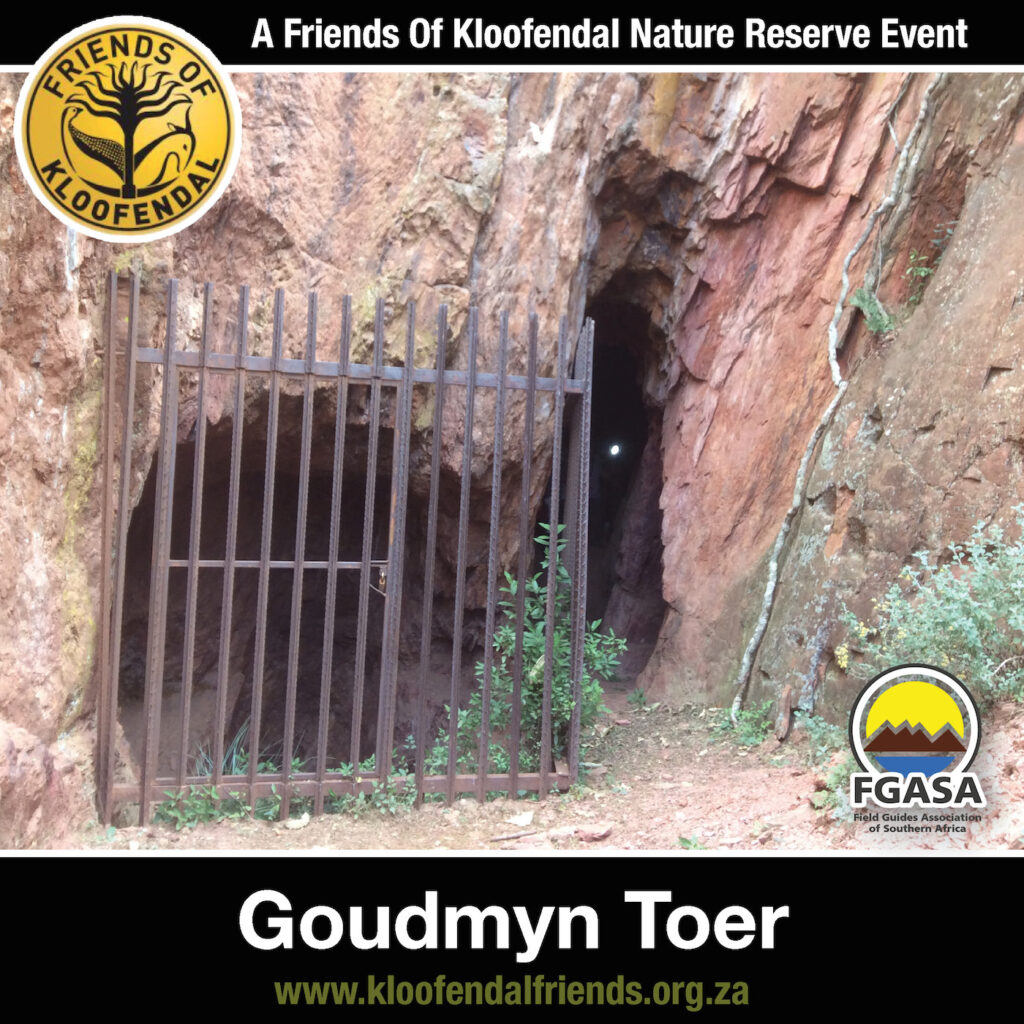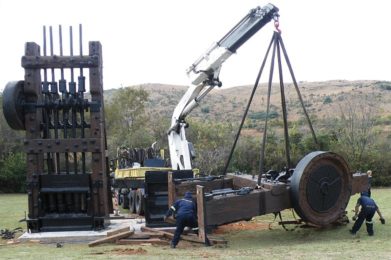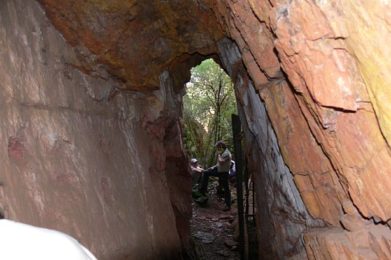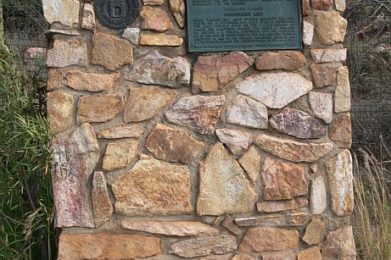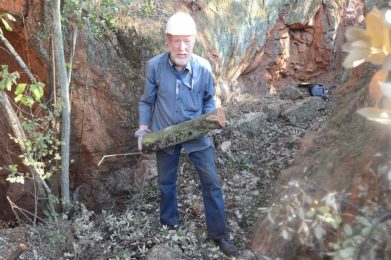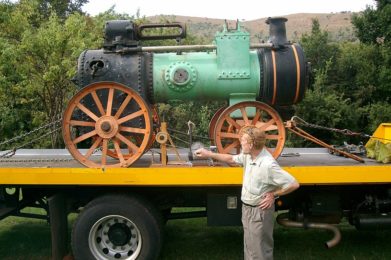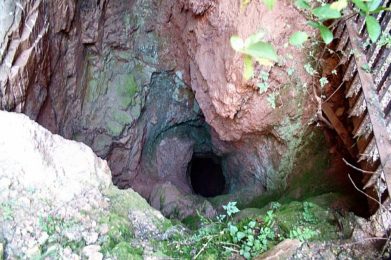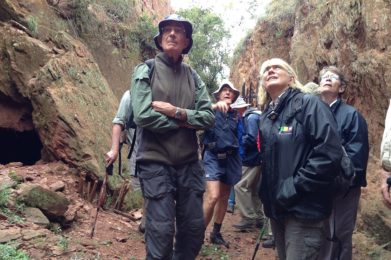Gold on this hillside was discovered by Fred Pine Theophilus Struben in 1884 and worked by himself and his brother Harry Willem Struben until 1888. It was then leased to a French nobleman, Jaques De Waru and others. In 1935 the area was sold by Fred Struben’s wife Mable to George Brown, who worked the area and also mined at the South of Kloofendal. The mine was proclaimed a national monument in 1980.
The National Monument plaque at the entrance to the mine enclosure reads:
“The worked-out mine shafts indicate the site where on 18 September 1884 f. P. T. Struben discovered the first payable gold on the Witwatersrand. He called the auriferous quartz vein, mined by him and his brother h. W. Struben, confidence reef. The discovery led to the rush of prospectors to the area and the eventual discovery in 1886 of the premier auriferous rock of the Witwatersrand, namely the conglomerates of the main reef.”
Proclaimed 1985
The mine and Kloofendal Nature Reserve and surrounds are of great historical significance in the discovery of gold on the Witwatersrand, and the establishment of Johannesburg.
Struben Stamp Mill
The Struben Stamp Mill (right) and another (below) were moved from Goldman Street, Florida, to the Reserve in May 2009 with permission from Johannesburg Arts, Culture & Heritage and the Johannesburg Mayoral Council. The plaque above is one of 129 on the Blue Plaque list of heritage sites, mostly in Johannesburg.
The Friends of Kloofendal (FroK) would like to thank the following for making this fine display possible.
- Vanguard Rigging (Kevin Joubert) kindly brought the stamp mill from Goldman Street, Florida, to Kloofendal free of charge.
- Shango Solutions donated funds for the foundations for the mill in Kloofendal. Johannesburg City Parks supplied and installed fencing around the Mills.
- The steam engine in the background was donated by the Transport Museum of Johannesburg and kindly moved to the site by the AA. FroK extended the fencing to include the steam engine.

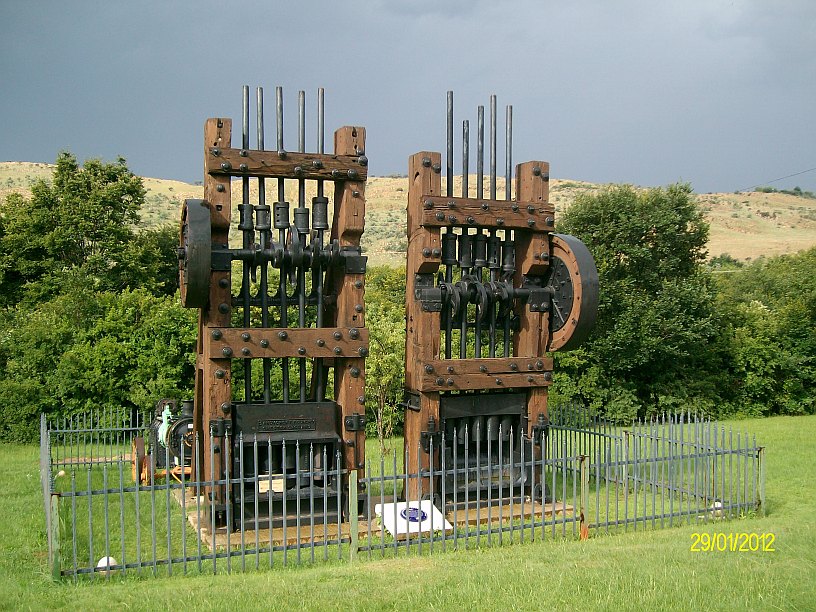
History of the Stamp mills
A monument to the Struben bothers was erected in 1936 by Geo. Brown overlooking the Confidence Reef site. An inscription read:
“To the memory of Fred and Harry Struben, who by their brotherly co-operation during a period of arduous work discovered and proved the gold-bearing conglomerates of the Witwatersrand, September 1884. The first public information of discovery was made to the President of the Transvaal Republic and the world, January 5 1885.”
The site can be found at 27.88203 East & 26.13581 South and is a few metres off the Rocky Ridge path.
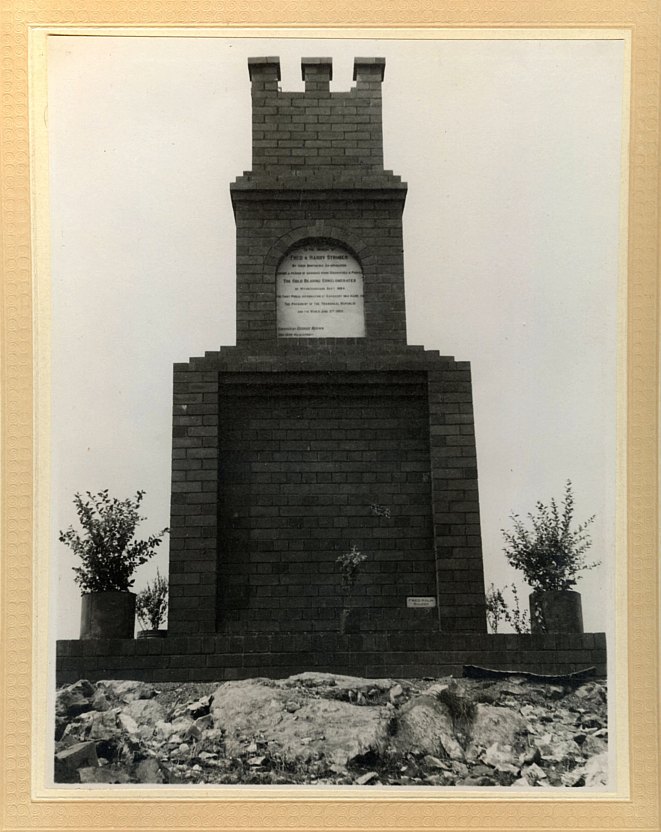
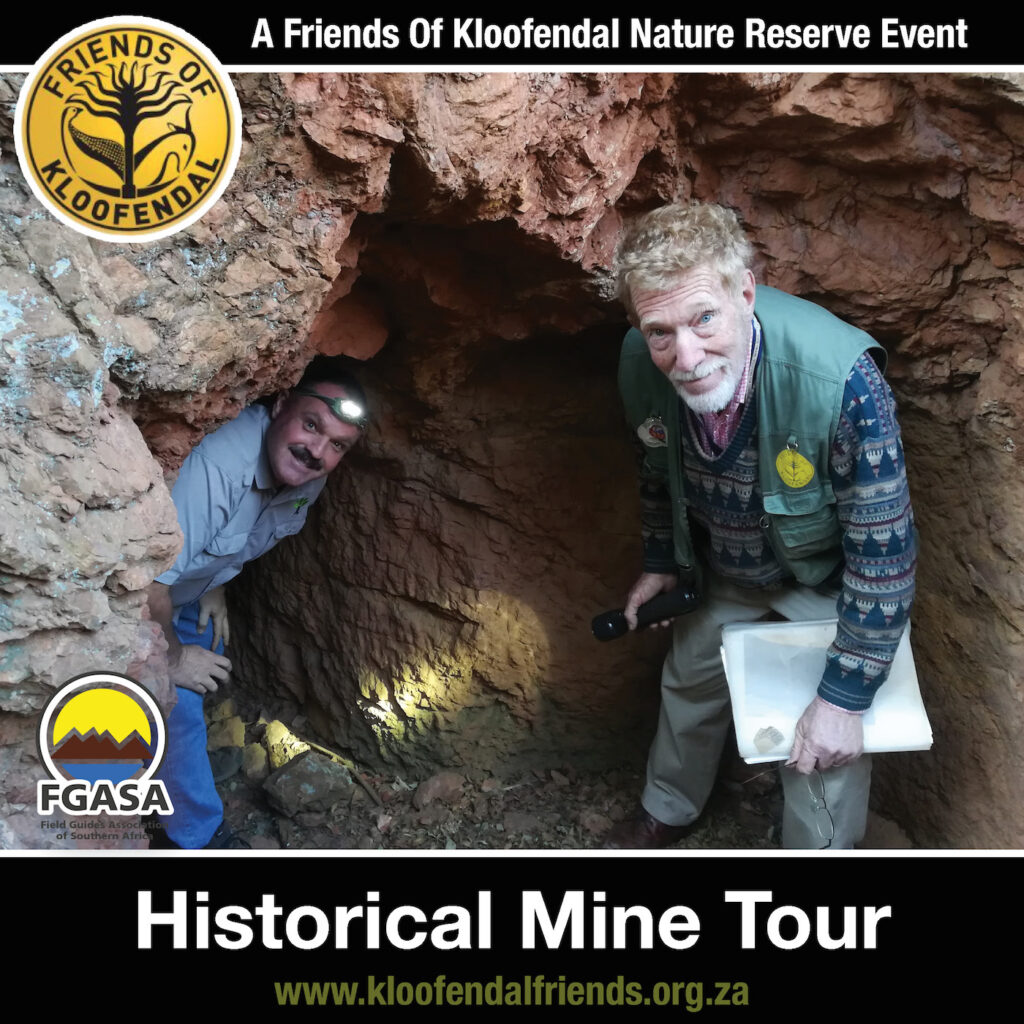
Join mine historian Rod Kruger on a 2 hour guided walk through the past, from the stamp mill to the Confidence Reef Gold Mine inside Kloofendal Nature Reserve. Participants will be taken back to the 1880s and the characters who found gold here and changed the history of South Africa, Participants will also go into the Gold Mine at Kloofendal. This is a fascinating event suitable for all ages.
This two-hour history easy walk takes you from the Stamp Mills up to and into the Struben Confidence Reef gold mine, highlighting where the gold came from, and the people who discovered it, leading to the rise of the city of gold, Johannesburg. Andre will take you back to the 1880s and the characters who found gold here and changed the history of South Africa.
This event is in Afrikaans.
